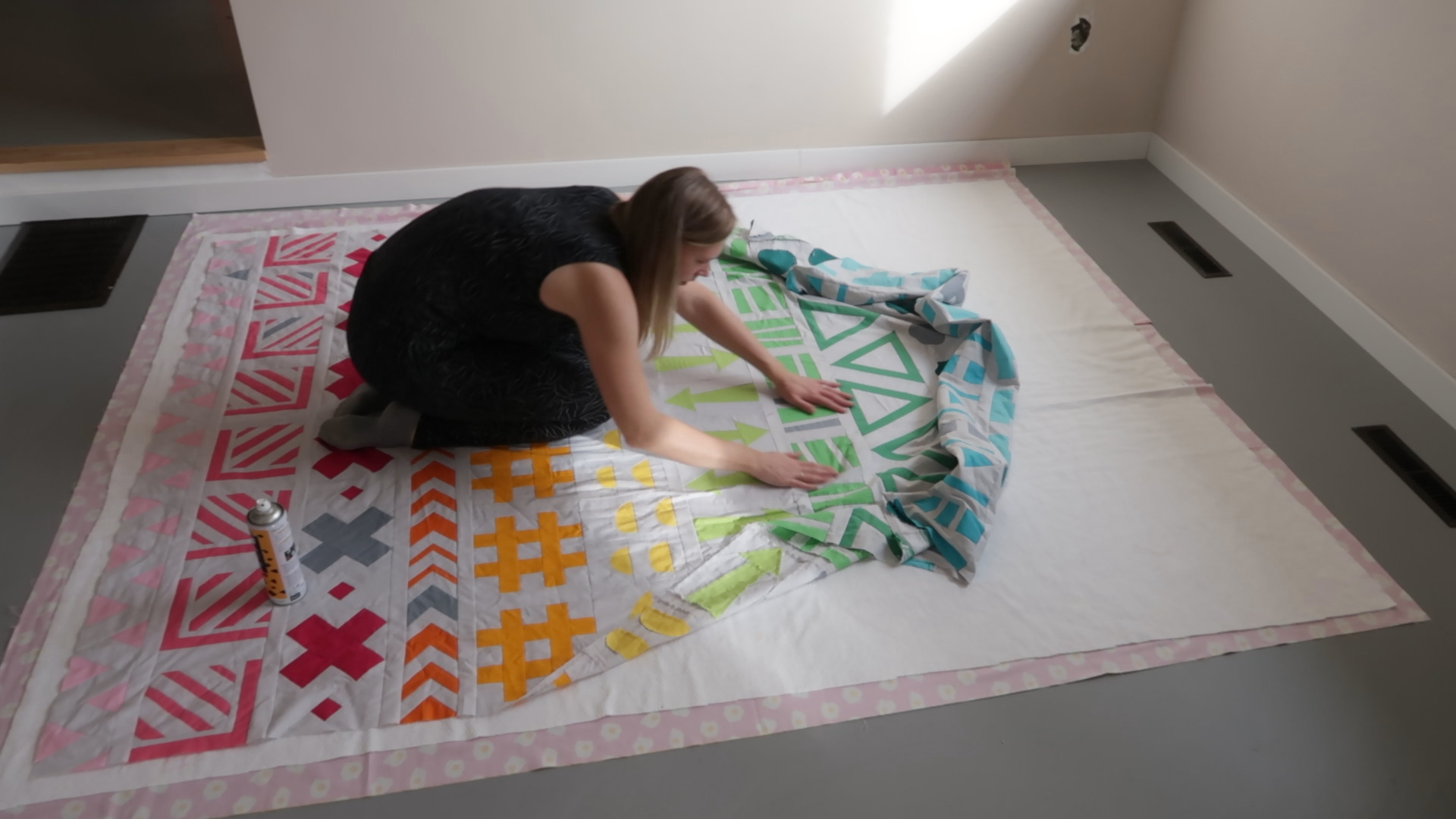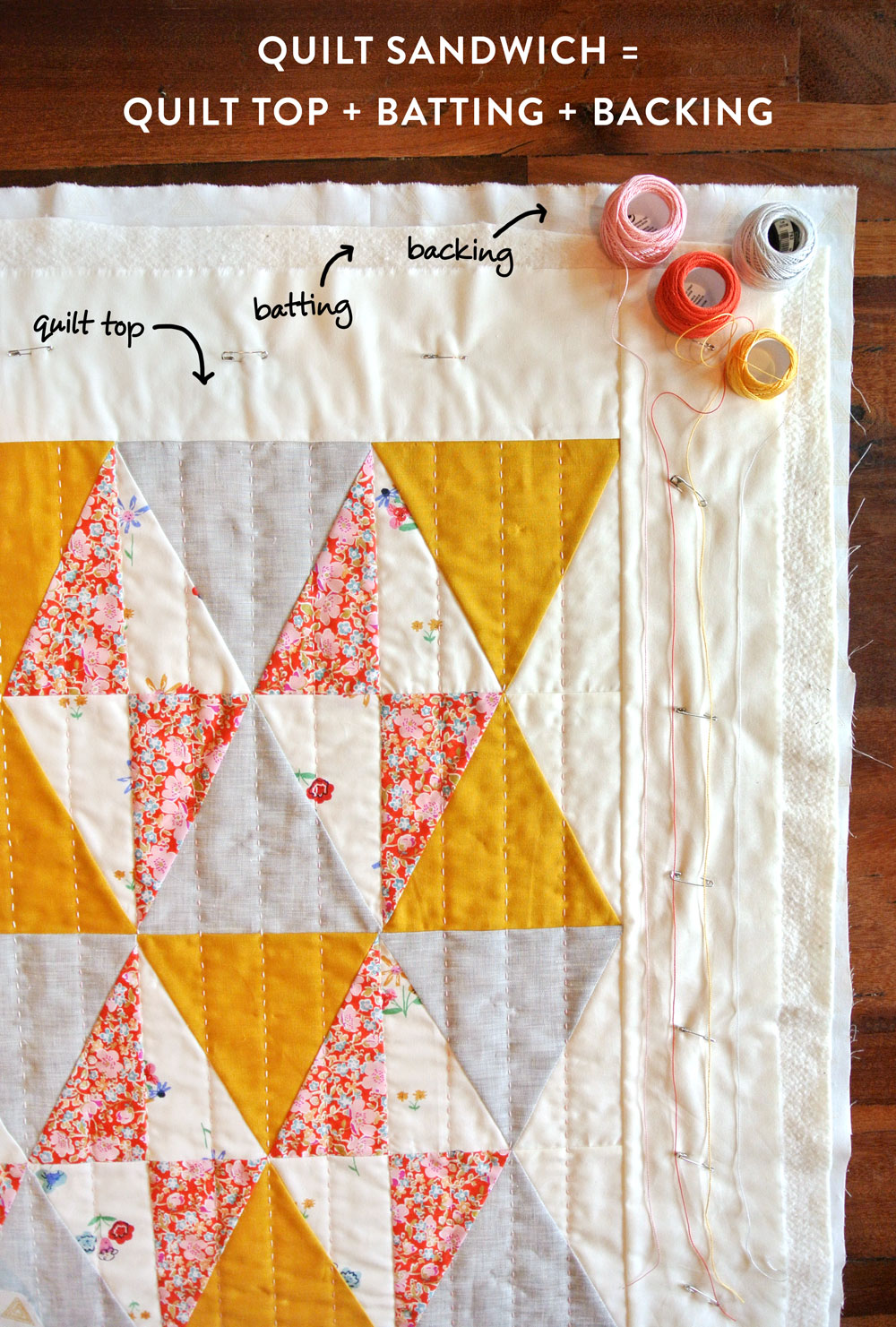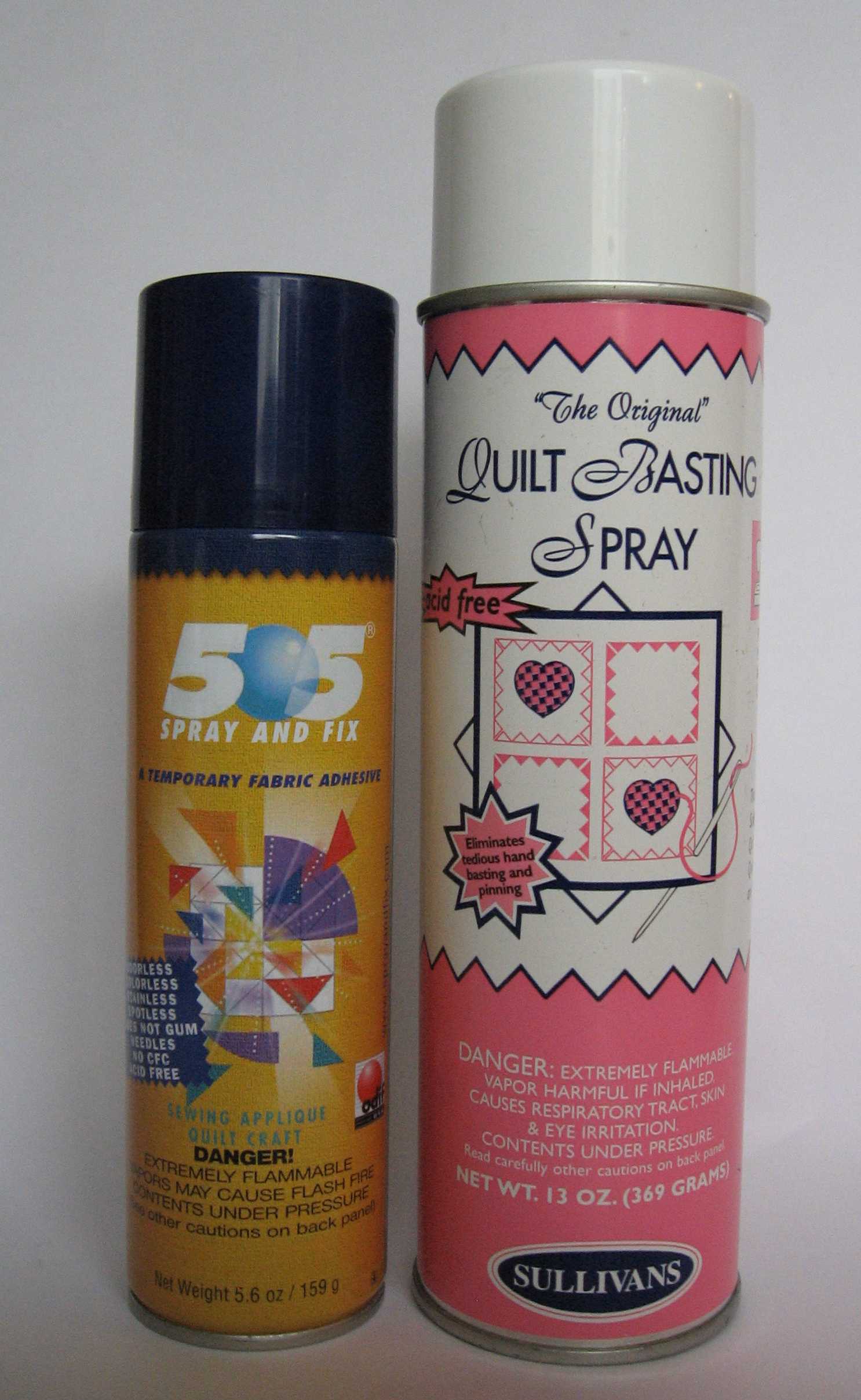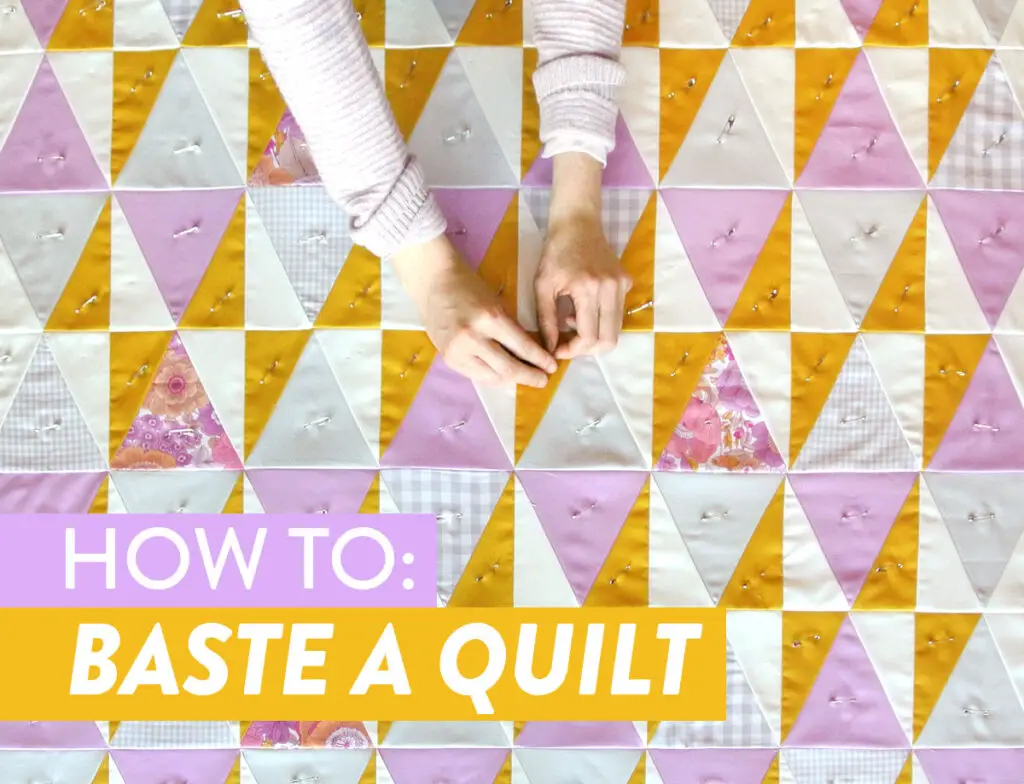Are you wondering how to spray baste a large quilt easily and quickly? Quilting can be a daunting task, especially when it comes to quilting large quilts. Fortunately, there is an easy and quick way to baste a quilt, and that is by using spray basting. In this article, you will learn how to spray baste a large quilt in just a few simple steps.
What Is Spray Basting a Quilt?

Spray basting a quilt is a technique for attaching the quilt top, batting, and backing together to create a quilt sandwich. It involves using a specialized spray adhesive to hold the layers together as you quilt. This technique is ideal for larger quilts, as it eliminates the hassle of pinning the layers together.
Advantages of Spray Basting a Quilt
Spray basting a quilt offers many advantages over other methods of quilt basting. It is much faster than pin basting and is a great choice for larger quilts. It also eliminates the need to use a large quilting frame, as the adhesive holds the layers in place while you quilt.
Disadvantages of Spray Basting a Quilt
The main disadvantage of spray basting a quilt is the cost of the specialized spray adhesive. It is also important to use the adhesive in a well-ventilated area, as it is flammable.
How to Sandwich a Quilt on a Table
One way to sandwich a quilt for spray basting is on a table. Start by laying the backing fabric on the table, wrong side up. Then, lay the batting on top of the backing. Next, lay the quilt top right side up on top of the batting. Finally, use a spray adhesive to secure the layers together. Once the adhesive has dried, you can begin quilting.
How to Spray Baste a Large Quilt

How to Sandwich a Quilt on a Table
Start by laying the backing fabric out on a large, flat table. Smooth it out to remove any wrinkles or bumps. Place the batting on top of the backing fabric, smoothing it out as well. Finally, add the quilt top, making sure it is centered and that all edges are flush. Pin the three layers together along the edges of the quilt.
How to Baste a Full Size Quilt
Using a spray adhesive, spray the batting in small sections and smooth it out with your hands. Work your way around the quilt, spraying and smoothing until the entire quilt is covered. If you can, use a fan to help the adhesive dry faster.
How to Baste a King Size Quilt on a Table
If you’re working with a king size quilt, you may need a bigger table or work area. Place the backing fabric and batting on the table, and then add the quilt top. Make sure the quilt top is centered and that all edges are flush. Pin the three layers together along the edges of the quilt.
How to Make an Inexpensive Board to Baste Quilts
If you don’t have access to a large table, you can make an inexpensive board to baste quilts on. Cut two pieces of plywood to the size of your quilt and attach them together using four 2x4s. Place the backing fabric and batting on the board and then add the quilt top, smoothing it out and pinning the edges together.
How to Baste a Quilt With a Basting Gun
For larger quilts, a basting gun is an easy way to baste a quilt together. Place the backing fabric and batting on the table, and then add the quilt top. Make sure the quilt top is centered and that all edges are flush. Using a basting gun, shoot staples into the edges of the quilt, holding the layers together.
How To Clean A Spray Basted Baby Quilt

Spray basting a baby quilt is an excellent way to keep the batting in place and the quilt layers from shifting. However, spray basting can leave sticky residue that needs to be cleaned up. Here are some tips on how to clean a spray basted baby quilt:
Remove Excess Spray Baste
Before cleaning the quilt, it is important to remove any excess spray baste. Place the quilt on a flat surface and use a paper towel to gently remove any excess basting spray.
Vacuum the Quilt
Vacuuming the quilt can help remove any remaining residue. Use a handheld vacuum cleaner and go over the entire quilt surface.
Spot Clean the Quilt
If there are still spots of spray baste on the quilt, try spot cleaning them. Use a mild detergent and a damp cloth to gently remove any remaining spots.
Dry the Quilt
Once the quilt is clean, lay it flat on a clean surface and let it air-dry. Do not use a dryer or any other heat source to dry the quilt, as this could damage the batting.
Check for Stains
Once the quilt is dry, check for any remaining stains. If there are any stains, try spot cleaning them with a mild detergent.
By following these steps, you can easily clean a spray basted baby quilt. When spray basting a king size quilt on a table, it is important to pay extra attention to cleaning and care of the quilt.
YouTube: How to Roll a Quilt for Basting
- Lay out your quilt on a flat surface. Make sure it is stretched out evenly and that there are no wrinkles or folds.
- Carefully roll the quilt. Start at the top and roll it down towards the bottom. Make sure that the batting is tightly rolled and that there are no wrinkles.
- Secure the roll with pins or tape. You can use safety pins or quilting clips to keep the roll securely in place.
- Place the roll on an inexpensive board. A board like this is a great way to keep your quilt in place while you spray baste it. You can make an inexpensive board from scrap wood and foam insulation.
- Spray baste the quilt. Start at the center and work your way out towards the edges. Make sure to keep the can at least 12 inches away from the quilt. Allow the baste to dry before handling.
After you have finished spray basting your quilt, you can unroll it and begin quilting. With the help of a video tutorial like the one above, you can learn how to roll a quilt for basting and make an inexpensive board to baste quilts quickly and easily.
Frequently Asked Questions
What items are needed to spray baste a large quilt?
- Sewing machine – for quilting the layers together.
- Spray adhesive – for temporarily adhering the quilt layers together.
- Rotary cutter – for trimming the edges of the quilt.
- Iron – for pressing the quilt layers before and after quilting.
- Tablecloth – for protecting the surface you are working on.
- Large workspace – for laying out the quilt.
- Cardboard – for protecting the back of the quilt.
How Long Will It Take to Spray Baste a Large Quilt?
Spray basting a large quilt can take anywhere from 2-4 hours, depending on the size of the quilt and the amount of basting required. It is important to take your time and spray evenly, making sure to cover all of the edges and corners. After the quilt is basted, it is important to give it time to settle and adhere, usually about 5-10 minutes. Once the quilt has been allowed to settle, it is then ready to be quilted.
What Safety Precautions Should I Take When Spray Basting?
- Wear Protective Gear: Wear a mask, goggles and gloves to protect your skin and lungs from the fumes released by the spray. Consider using a respirator if you are sensitive to chemicals.
- Ventilate the Area: Make sure the space is well-ventilated. Open windows or use fans to circulate the air and reduce the amount of fumes released.
- Avoid Open Flames: Do not use a spray basting near an open flame or in an area with a high heat source. The fumes released by the spray can be flammable.
- Keep Away From Children: Make sure to keep children away from the area while you are spray basting. The fumes released can be toxic and dangerous for young children.
- Clean Up Immediately: Clean up any excess spray that has been released while basting. The fumes released can be hazardous and should be disposed of properly.
How do I determine the right amount of spray to use?
- Check the manufacturer’s instructions: Refer to the manufacturer’s instructions to determine the right amount of spray to use. The instructions will provide specifics on how many layers of batting and fabric can be basted with one can of spray.
- Test in a small area: Spray a small area of the quilt, such as a scrap piece of fabric, to test the amount of spray that works best for your project. If the spray is too wet, use less; if it’s too dry, use more.
- Start with a light mist: When spraying the quilt, start with a light mist. Hold the can 6-8 inches from the surface, and spray slowly and evenly in an up and down motion. This will help ensure an even distribution of the adhesive on the quilt.
- Spray one section at a time: To ensure coverage, spray one section of the quilt at a time. To avoid over-saturation, allow the quilt to dry between each application of spray.
Can I use the same spray basting technique for smaller quilts?
Yes, the same spray basting technique can be used for smaller quilts. However, you may need to adjust the number of pins used and the distance between them to suit the size of the quilt. Make sure to use a low-tack basting spray and test the spray on a scrap fabric first to ensure you are happy with the results.
Conclusion
Spray basting is an effective and convenient way to baste a large quilt, saving time and effort. With the right tools and supplies, it’s easy to do and can result in an even, secure basting that doesn’t require re-basting. Spray basting is a great choice for any quilter looking for an efficient way to secure their quilt top, batting, and backing.






